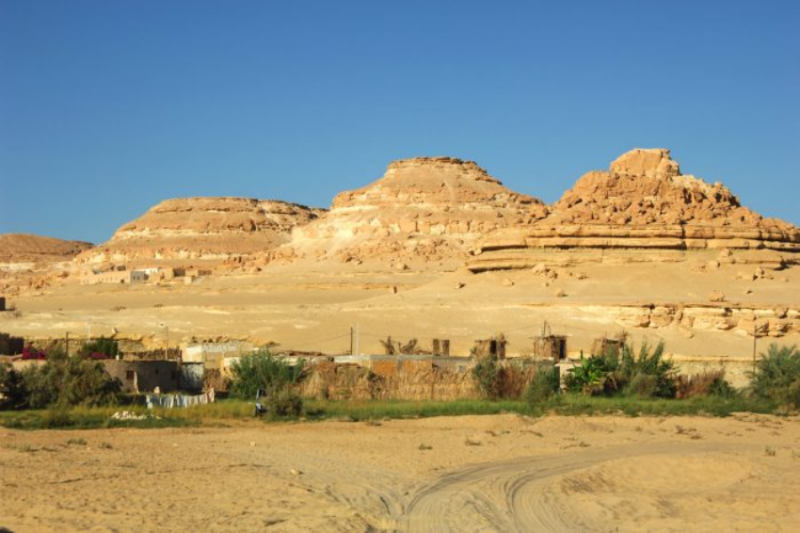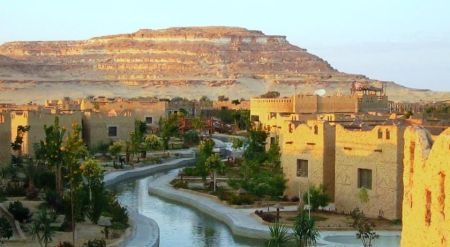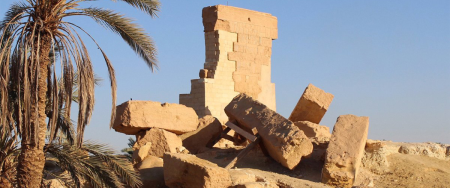dakrour mountain siwa

Discovering Dakrour Mountain Siwa: Egypt’s Hidden Desert Gem of Healing and Heritage
Nestled deep in the heart of the mesmerizing Siwa Oasis, Dakrour Mountain stands as a timeless symbol of peace, spirituality, and natural therapy. Known locally as Gebel Dakrour, this ancient mound of sandstone and salt is far more than just a geographical feature—it’s a living testament to Egypt’s desert mystique. The mountain’s unique healing properties, historical significance, and panoramic desert views make it a must-visit for anyone chasing authentic experiences far from the beaten path. It’s here that nature and tradition meet in a dance of timeless serenity, offering both body and soul a respite from the world’s chaos.
As part of the Siwa landscape, Dakrour Mountain’s fame isn’t accidental. For centuries, travelers and locals alike have flocked to its slopes seeking healing through sand baths, where the desert’s warmth detoxifies the body and rejuvenates the spirit. Beyond its therapeutic allure, this sacred site has strong cultural roots tied to Siwan tradition, with legends whispering through the winds that the mountain is a place of ancient spiritual gatherings. Today, Dakrour Mountain Siwa remains a cornerstone of eco-tourism, drawing wellness seekers, cultural explorers, and photography enthusiasts who yearn to capture its magic. Its surroundings are dotted with palm groves, hot springs, and salt lakes—forming a natural paradise that feels worlds away from modern life.
For those embarking on Egypt Desert Tours or searching for authentic desert experiences, Dakrour Mountain offers a rare glimpse into the country’s soul. This article unveils every captivating detail about Dakrour Mountain Siwa—from its geology and healing traditions to its role in local myths and modern wellness travel. Let’s journey into the desert and uncover the secrets of this ancient hill where sun, sand, and spirit converge.
The Geography and Geology of Dakrour Mountain Siwa
Dakrour Mountain Siwa rises majestically on the eastern edge of the oasis, approximately three kilometers from Shali Fortress. Its layered composition of sandstone, limestone, and natural salt formations gives it a distinct reddish hue that shimmers under the desert sun. The terrain, though rugged, is accessible, allowing visitors to hike and explore areas where time has etched visible traces of wind erosion. The surrounding plains, dotted with palm trees and olive groves, contrast beautifully with the mountain’s stony surface, creating a breathtaking natural tableau.
Geologists attribute Dakrour’s therapeutic quality to the unique mineral composition of its soil. The combination of salt, sulfur, and sand minerals generates a deep natural heat that’s ideal for the famous sand baths. During the scorching summer months, temperatures beneath the sand can rise high enough to cause intense sweating, helping cleanse toxins through the skin. This natural process has turned Dakrour into a health pilgrimage site, with people from around the world visiting Siwa to experience its healing touch. The geological blend also nourishes the surrounding vegetation, giving life to Siwa’s date palms and olive fields—essential elements of the oasis economy.
Historical Legends and Ancient Beliefs Surrounding Dakrour Mountain
Dakrour Mountain Siwa holds a special place in ancient Egyptian and Siwan folklore. According to local legend, an Arab sheikh named Abd el-Qadir Dakrour once lived near the mountain, devoting his life to healing and spirituality. His grave, still visited today, lies at the mountain’s base and is believed to emit blessings. Each year, locals commemorate his memory during the Dakrour Festival—a three-day event celebrating unity and peace among the Siwan tribes.
This festival, held after the harvest season, attracts hundreds of participants who camp around the mountain, sharing food, music, and poetry. It’s a symbol of reconciliation and social harmony that has persisted for generations. The mountain is also said to be a place where early settlers and spiritual guides performed rituals to honor the desert’s spirits. Visitors can still sense that sacred aura, especially during sunrise and sunset when the mountain glows in golden hues. Much like nearby landmarks such as the Oracle of Amun, Dakrour embodies the spiritual depth that defines Siwa’s ancient identity.
Healing Powers of the Famous Sand Baths
The healing sand baths of Dakrour Mountain Siwa are world-renowned for their natural therapeutic benefits. Visitors are buried up to their necks in hot desert sand for about ten to fifteen minutes, allowing the natural heat and minerals to penetrate deep into the body. This traditional therapy, said to relieve ailments like arthritis, rheumatism, and joint pain, has attracted travelers for centuries. Locals claim that repeated sessions can significantly improve blood circulation, strengthen immunity, and even cure chronic fatigue.
What makes the Dakrour sand baths unique is their cultural authenticity. Unlike commercial spas, the process is conducted by local experts who monitor the sand’s temperature and ensure proper hydration. After the bath, participants rest in shaded huts, sipping herbal teas and enjoying Siwan dates. The combination of heat, desert silence, and traditional hospitality transforms the experience into a holistic retreat. Many who visit Dakrour Mountain for healing leave with not just physical relief but also emotional rejuvenation—a true testament to the mountain’s mystical reputation.
Best Time to Visit Dakrour Mountain Siwa
Timing is everything when planning a trip to Dakrour Mountain Siwa. The ideal period is between October and April, when temperatures are moderate, making outdoor exploration comfortable. The famous sand baths, however, are traditionally practiced during summer, especially between July and September, when the desert’s natural heat peaks. Visitors should plan accordingly if they wish to experience the traditional healing rituals.
During cooler months, the area becomes perfect for hiking, camping, and photography. The panoramic view from the mountain’s summit reveals the vast expanse of the Siwa Oasis, shimmering salt lakes, and palm groves stretching to the horizon. The early morning light paints the desert in shades of gold and amber, while the evening sunset casts a violet glow that photographers dream of capturing. Many explorers combine their journey with a visit to nearby attractions such as the Mountain of the Dead or the charming Cleopatra Spring for a full immersion in Siwa’s wonders.
Cultural Significance and Tribal Unity Around Dakrour
Beyond its healing fame, Dakrour Mountain Siwa is deeply woven into the cultural fabric of the oasis. The Dakrour Festival remains a cornerstone of Siwan identity, strengthening bonds among tribes and preserving traditional songs, dances, and poetry. It’s one of Egypt’s most authentic cultural gatherings, untouched by mass tourism. Visitors attending this yearly event witness living history—men in white robes reciting ancient chants, women weaving palm fronds, and children playing traditional games passed down for generations.
This spirit of unity and peace has made Dakrour a symbol of social reconciliation. Even in modern times, when disputes arise between tribes, elders reference the ‘oath of Dakrour’, a pledge of forgiveness rooted in the mountain’s sacred reputation. Few places on Earth blend natural healing with moral philosophy so seamlessly. For travelers looking to go beyond sightseeing, Dakrour Mountain offers a human connection that transcends language and culture.
Modern Tourism and Sustainable Travel at Dakrour Mountain
Today, Dakrour Mountain Siwa has become a highlight of Egypt Excursions that focus on eco-tourism and wellness. Local guesthouses provide authentic Siwan hospitality, complete with mud-brick architecture and palm-thatch roofs. These eco-lodges emphasize sustainability—solar power, locally sourced food, and minimal environmental impact. Tourists can engage in traditional cooking, camel rides, and stargazing, enjoying an immersive experience that respects the desert’s fragile ecosystem.
Responsible travel initiatives ensure that Dakrour’s natural and cultural heritage remains preserved for future generations. Local guides educate visitors about the oasis’ delicate balance and the importance of conserving water and resources. As more travelers seek mindful experiences, Dakrour Mountain stands out as a model of sustainable wellness tourism in Egypt. Those searching for relaxation beyond luxury spas find a deeper, more spiritual form of healing here—rooted in earth, silence, and history.
Photography and Adventure Opportunities at Dakrour Mountain Siwa
Dakrour Mountain offers photographers and adventurers a playground of natural beauty. Whether framing the dunes under the soft morning light or capturing the sunset as it sets the desert ablaze, every angle tells a story. Adventurous travelers can climb the mountain’s slopes for panoramic views over Siwa’s salt lakes and distant dunes. The nearby Great Sand Sea provides an ideal extension for thrill seekers who wish to experience sandboarding or 4x4 desert safaris.
In recent years, Dakrour has become a favorite among photographers seeking to document traditional Siwan life. The contrast between the ochre mountain and the green oasis below creates a dramatic backdrop rarely found elsewhere in Egypt. For creative souls, the mountain’s silence inspires introspection, poetry, and artistry—a tranquil muse standing steadfast against the sands of time.
FAQs About Dakrour Mountain Siwa
What makes Dakrour Mountain Siwa unique?
Dakrour Mountain Siwa stands out for its natural healing sand baths, cultural heritage, and breathtaking scenery. Its mineral-rich sands provide therapeutic benefits, while its role in Siwan traditions and festivals makes it both a spiritual and social landmark in Egypt’s Western Desert.
How can travelers reach Dakrour Mountain?
The mountain lies a few kilometers from the Siwa town center and is easily accessible by tuk-tuk, bike, or guided vehicle tours. Many wellness and desert tour operators include Dakrour in their itineraries, especially those offering Egypt Vacations Packages focusing on oasis exploration.
Are sand baths safe for everyone?
Sand baths are generally safe when guided by local experts. However, individuals with heart conditions or high blood pressure should consult a doctor before participating. The process involves high temperatures and intense sweating, which can be physically demanding.
When is the Dakrour Festival held?
The Dakrour Festival takes place each October, following the harvest season. It’s a celebration of peace, harmony, and friendship among Siwan tribes, marked by music, dance, and communal feasts at the mountain’s base.
What other attractions are near Dakrour Mountain Siwa?
Nearby attractions include the ancient Shali Castle, the mystical Oracle Temple of Amun, and the refreshing Cleopatra Spring. Visitors can also explore Siwa’s salt lakes or take excursions to the dunes of the Great Sand Sea for a full desert adventure.







